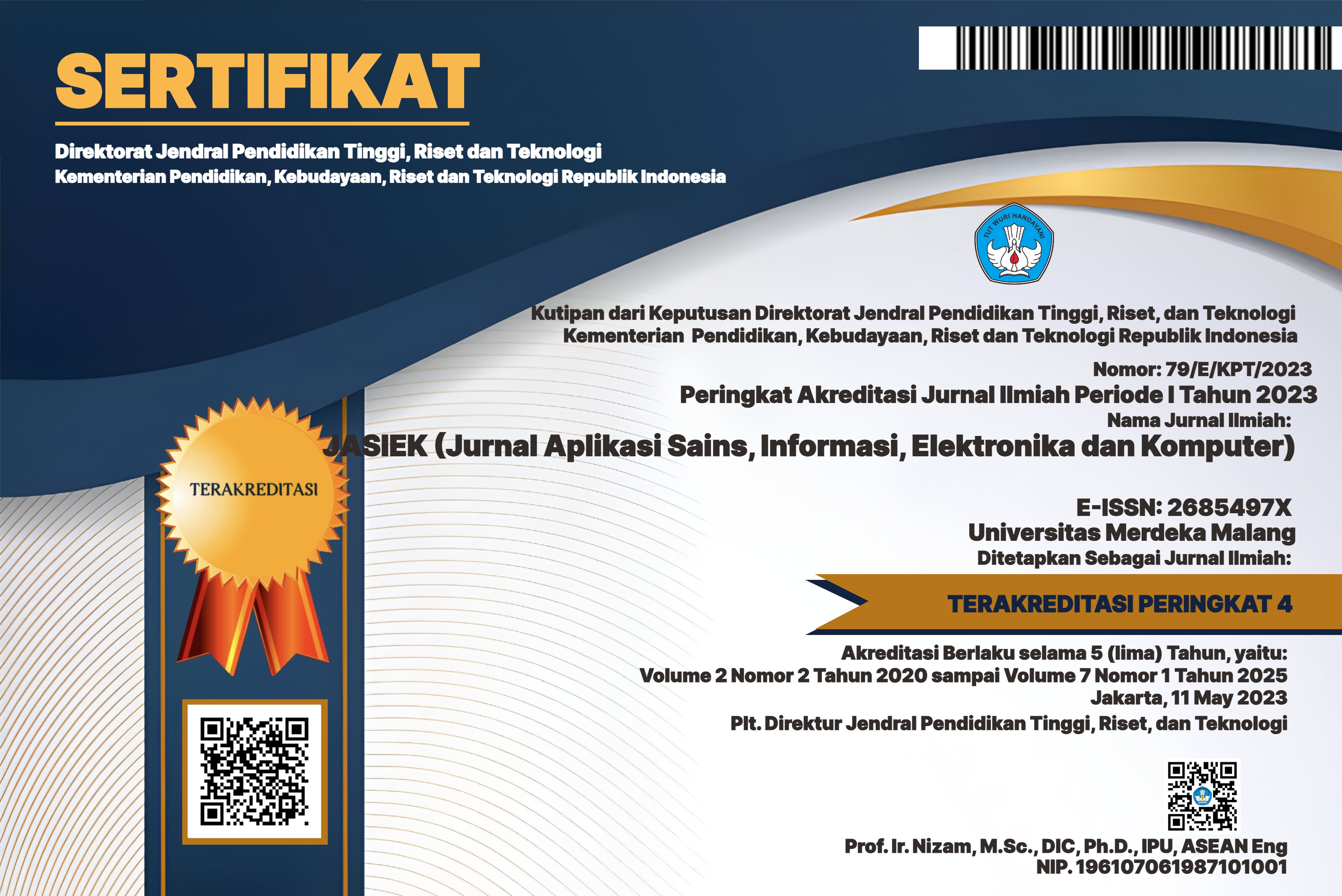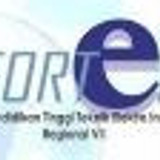FAKTOR-FAKTOR PENENTU GEJALA PENYAKIT KANKER PAYUDARA DENGAN PENDEKATAN JARINGAN SARAF TIRUAN
DOI:
https://doi.org/10.26905/jasiek.v1i1.3098Abstract
Kanker Payudara adalah salah satu penyakit yang menjadi momok bagi kaum wanita. Kanker payudara juga menyerang kaum pria akan tetapi kasusnya tidak sebanyak kaum wanita. Dataset klasifikasi kanker payudara Coimbra yang diambil dari UCI Machine Learning, disampaikan bahwa ada 9 atribut yang memengaruhi kondisi seseorang menjadi penderita atau kemungkinan menderita penyakit kanker payudara. Atribut atau faktor tersebut adalah BMI, Glukosa, Insulin, HOMA, Leptin, Adiponectin, Resistin, MCP-1, dan Umur. Tujuan yang akan dicapai dalam penelitian ini adalah menemukan faktor-faktor penentu yang mempengaruhi indikasi penyakit kanker payudara dengan pendekatan Jaringan Saraf Tiruan (JST). Setelah dilakukan simulasi jaringan saraf tiruan dengan 2 lapisan tersembunyi diperoleh hasil bahwa faktor usia menjadi faktor yang memiiki pengaruh terbesar, sedangkan MCP-1 merupakan faktor yang memiliki pengaruh terkecil  dalam prediksi penyakit kanker payudara.
Â
Downloads
References
B. K. dan P. M. Kementrian Kesehatan RI, “Hari Kanker Sedunia 2019,†Kamis, 31 Januari, 2019. [Online]. Available: http://www.depkes.go.id/article/view/19020100003/hari-kanker-sedunia-2019.html. [Accessed: 11-May-2019].
I. Yulianti, H. S. Santoso, and D. Sutiningsih, “Faktor-Faktor Risiko Kanker Payudara (Studi Kasus Pada Rumah Sakit Ken Saras Semarang),†J. Kesehat. Masy., vol. 4, no. 4, pp. 401–409, 2016.
M. PatrÃcio et al., “Using Resistin, glucose, age and BMI to predict the presence of breast cancer,†BMC Cancer, vol. 18, no. 1, 2018.
W. M. Dessy and A. Irawan, “Perbandingan Metode Jaringan Syaraf Tiruan Backpropagation Dan Learning Vector Quantization Pada Pengenalan Wajah,†J. Komput. dan Inform., vol. 1, no. 1, pp. 45–51, 2012.
A. Hermawan and D. Avianto, “The Implementation of Neural Network on Determining the Determinant Factors Towards Students’ Stress Resistance,†J. Telecommun. Electron. Comput. Eng., vol. 9, no. 3, pp. 129–133, 2017.
Didi, D. A. Pratiwi, E. Angliati, Fitriani, A. Dayumi, and T. W. Widyaningsih, “Klasifikasi Kanker Payudara Dengan Jaringan Syaraf Tiruan Levenberg Marquadt Berdasarkan Citra Mammography,†Semin. Nas. Teknol. Inf., pp. 115–119, 2017.
R. Anggraeni and A. Indrarti, “Klasifikasi Status Gizi Balita Berdasarkan Indeks Antropometri menggunakan Jaringan Saraf Tiruan,†SNASTI, pp. 14–18, 2010.
V. O. Oladokun, A. T. Adebanjo, and O. E. Charles-Owaba, “Predicting students’ academic performance using artificial neural network: A case study of an engineering course,†Pacific J. Sci. Technol., vol. 9, no. 1, pp. 72–79, 2008.
F. S. Panchal and M. Panchal, “Review on Methods of Selecting Number of Hidden Nodes in Artificial Neural Network,†Int. J. Comput. Sci. Mob. Comput., vol. 311, no. 11, pp. 455–464, 2014.
M. Sihombing and A. N. Sapardin, “Faktor Risiko Tumor Payudara Pada Perempuan Umur 25-65 Tahun Di Lima Kelurahan Kecamatan Bogor Tengah,†J. Kesehat. Reproduksi, vol. 5, no. 3, Feb. 2017.
M. Meilani, “Pendekatan indeks antropometri sebagai alat skreening hipertensi pada orang dewasa di daerah urban (Analisis Riskesdas 2007) [Tesis],†Universitas Indonesia, Depok, 2012.
Downloads
Additional Files
Published
Issue
Section
License
Authors who publish with this journal agree to the following terms:
The journal allow the authors to hold the copyright without restrictions and allow the authors to retain publishing rights without restrictions.
Authors retain copyright and grant the journal right of first publication with the work simultaneously licensed under a Creative Commons Attribution-ShareAlike 4.0 International License that allows others to share the work with an acknowledgement of the work's authorship and initial publication in this journal.
Authors are able to enter into separate, additional contractual arrangements for the non-exclusive distribution of the journal's published version of the work (e.g., post it to an institutional repository or publish it in a book), with an acknowledgement of its initial publication in this journal.
Authors are permitted and encouraged to post their work online (e.g., in institutional repositories or on their website) prior to and during the submission process, as it can lead to productive exchanges, as well as earlier and greater citation of published work (See The Effect of Open Access).

This work is licensed under a Creative Commons Attribution-ShareAlike 4.0 International License.










